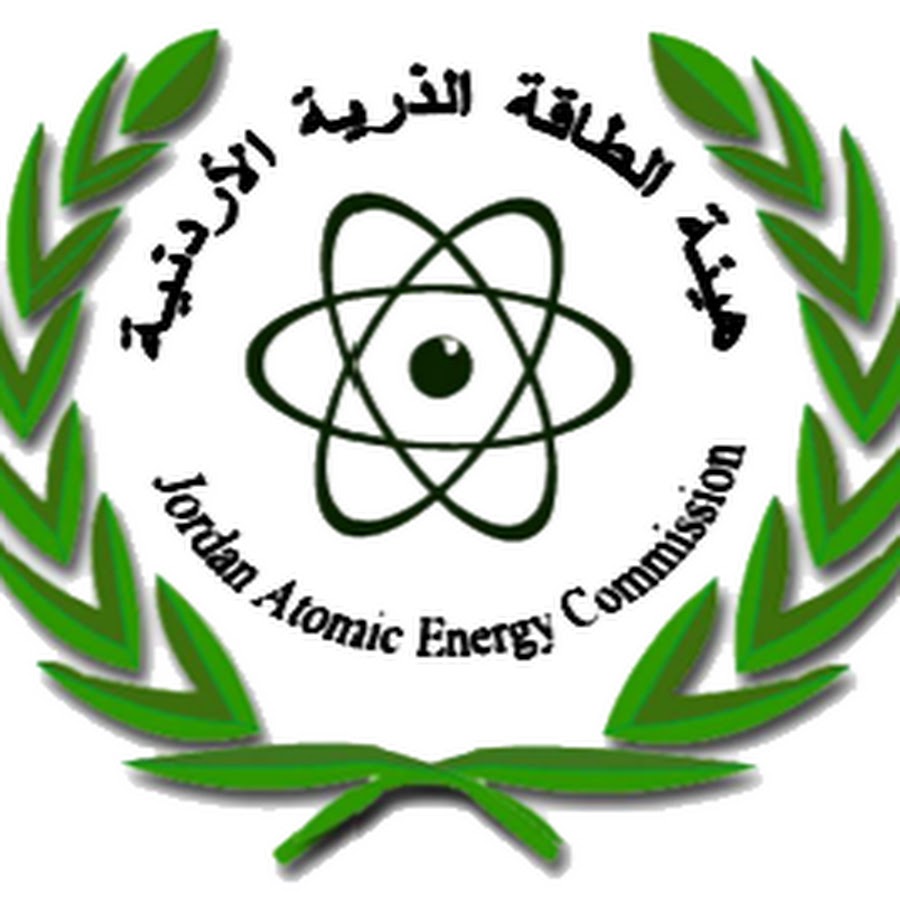An International Atomic Energy Agency (IAEA) expert mission has concluded that reports compiled by the Jordanian Atomic Energy Commission will provide a good basis for a feasibility study into Jordan’s use of small modular reactors (SMRs) for generating electricity generation and desalinizing seawater.
Jordan is considering the use of an SMR to provide the necessary electricity to operate a reverse osmosis desalination plant. The SMR will also pump an estimated four hundred million cubic yards of drinking water each year from the Red Sea coast to the capital Amman which is about two hundred and fifty miles away and two thousand three hundred feet above sea level.
The IAEA expert review mission was held at its Vienna headquarters in August of 2023. The review team consisted of eighteen IAEA staff and three external experts. It evaluated whether reports submitted by the Jordan Atomic Energy Commission (JAEC) included all the required information to support decision making for deploying an SMR for power generation and desalination. Areas covered by the IAEA review included nuclear power technology and safety, siting and licensing, nuclear desalination, nuclear law and stakeholder engagement, among others.
The IAEA mission found that Jordan’s reports provide a good basis for a feasibility study. The mission also suggested areas where work could be expanded or improved. These included conducting a study on the selection of the nuclear unit size while taking into account the need to strengthen electric connections to the nodal points of the grid and neighboring countries. Exploration of potential alternative fuel suppliers was also suggested.
Khalid Khasawneh is the Commissioner for Nuclear Power Reactors at JAEC. He said, “This endeavor exemplified an agency-wide collaborative effort that addressed all aspects of the feasibility study, providing essential guidance on IAEA services that Jordan could benefit from in enhancing the assessment and progress of our SMR project.”
The IAEA said that Jordan was one of a growing number of countries that have expressed interest in deploying SMRs. To better assist such countries, IAEA Director General Rafael Mariano Grossi established the SMR Platform in 2021 to provide coordinated, agency-wide support on all aspects of SMR development, deployment and oversight.
The mission followed an IAEA workshop last year in Amman which explored the technologies and requirements for the development of nuclear desalinization.
Blog
-

Nuclear Reactors 1283 – Jordan Is Considering The Deployment Of SMRs For Generating Electricity and Desalinating Sea Water
-
Links for 29 Sept 2023
Romania sets out roadmap for licensing of NuScale VOYGR world-nuclear-news.org
Japan utility starts release of second batch of treated radioactive water reuters.com
New Mexico signs final order to renew permit at US nuclear waste repository krwg.org
Senator Mitt Romney says he is concerned about a nuclear North Korea deseret.com
-

Nuclear Reactors 1282 – Holtec Is Applying To The NRC For Authorization To Restart The Shuttered Palisades Nuclear Power Plants
The Palisades nuclear power plant in Michigan could become the first nuclear power plant that was successfully started in the U.S. Holtec International submitted a filing with the Nuclear Regulatory Commission (NRC) to formally start the process of seeking reauthorization of power plant operations at the plant which was shut down in May 2022. Holtec said that the filing followed a series of public meetings with Palisades within the NRC’s existing regulatory framework.
Jean Fleming is the Holtec International Vice President of Licensing, Regulatory Affairs and Probabilistic Safety Analysis. She said, “Our licensing submittal is a significant step in exploring the potential for Palisades to continue contributing to the region’s energy and economic needs, while adhering to the highest safety and regulatory standards. We understand the importance of nuclear power in our nation’s energy mix and the critical role it plays in providing safe, reliable, carbon-free electricity here in Michigan. Palisades’ safety and operational performance met the industry’s highest standards when it was taken offline last year. Its systems and equipment remain well maintained and in excellent material condition. This licensing submittal is the first of a series of submittals intended to return Palisades to full operation.”
Palisades is a single unit nuclear power plant which started commercial operations in 1971. Entergy announced in 2016 that it planned to close the plant. The NRC approved the license from Entergy to Holtec for the purpose of decommissioning the plant in 2021. The eight hundred- and five-megawatt pressurized water reactor was removed from service by Entergy on the 20th of May 2022 and defueled by the 10th of June.
The sale to Holtec was completed later that same month. Holtec announced a few days later that it was applying for federal funding to allow it to restart the plant. It was unsuccessful in the first round of the U.S. Department of Energy’s (DoE’s) Civil Nuclear Credit program. However, Holtec announced in December that it was reapplying. Holtec said that it was “working cooperatively with the DOE to move the loan application process forward”.
On the 31st of July, Michigan Governor Gretchen Whitmer signed into law the State of Michigan’s Fiscal Year 2024 budget. The budget provides one hundred and fifty million dollars in funding for the restart of the plant.
Last month, Holtec announced that it had signed a long-term power purchase agreement with the non-profit Wolverine Power Cooperative. Under the multi-decade agreement, Wolverine commits to purchasing two-thirds of the power generated from a restarted Palisades plant. Wolverine’s partner Hoosier Energy is purchasing the balance.
Holtec noted that “will greatly enhance Michigan’s carbon-free energy generation, the region’s grid reliability and decrease the region’s reliance on (expensive) energy imports”.
Kelly Trice is the President of Holtec Nuclear Generation and Decommissioning. He said that “Holtec plans to build up the Palisades site into a mega-clean energy provider to the region with the restarted Palisades power plant as its centerpiece.”
This is an interesting development for the U.S. nuclear industry. It is the first time that a shuttered nuclear power plant due to be decommissioned was authorized to be restarted instead. -
Links for 28 Sept 2023
Air Force Research Lab awards design contracts for nuclear powered spacecraft spacenews.com
UK Names Six Developers to Advance Small Nuclear Reactor Designs enr.com
ABS AIP for Floating Offshore Nuclear Power Barge marinelink.com
Russians prepare for nationwide drill as despot urged to test bomb express.co.uk
-

Nuclear Weapons 833 – Russians Are Testing A Nuclear-powered Cruise Missile – Part 2 of 2 Parts
Part 2 of 2 Parts (Please read Part 1 first)
Visual evidence of testing preparations includes both before and after satellite images of the test site. Imagery taken on the morning of September 20th shows many vehicles present on a launch pad at the base. One of the trucks had a trailer that appears to correspond to the dimensions of the missile. A weather shelter that typically covers the specific launch site had been shifted about fifty feet. By the afternoon after the test, the trailer was gone, and the shelter had been moved back to its original position.
Additional satellite imagery that was captured on September 28th shows the launch pad active again. There was a similar trailer at the site and the weather shelter had again been shifted.
On August 31st, Russian authorities issued an aviation notice for a “temporary danger area”. The notice advised piloted to avoid part of the Barents Sea off the coast and twelve miles from the launch site, Known as Pankovo. The notice has since been extended several times. It was scheduled to be in force through October 6th. Russia had issued a similar notice before a Burevestnik test in 2019.
Two Russian aircraft specifically utilized for collecting data from missile launches were parked about one hundred miles south of the launch site in early August. The aircraft were at the Rogachevo air base, according to analysis of satellite images by Bellona, a Norwegian environmental organization. The aircraft are owned by Rosatom which is the Russian atomic energy company. They stayed at that air base at least through September 26th, according to satellite imagery. During the Burevestnik tests held in 2018, the same type of aircraft were also in the vicinity.
A U.S. Air Force reconnaissance aircraft called a RC-135W Rivet Joint flew at least two missions off the coast of the Arctic island where the launch site is located on September 19th and September 26th according to the tracking platform known as Flightradar24. These two missions represent a slight increase from usual known activity.
The highly secretive nature of the Burevestnik missile initiative and the remote launch location make it hard to determine if a test is coming soon or if the missile may have already been recently retested. Launch tests of the Burevestnik have been conducted at the Arctic base in the past. Russia could also have tested just the missile’s rocket motor or a component of the missile itself.
The U.S. government declined to comment on the report of Burevestnik testing.
Experts said that the Burevestnik is dangerous not only because of its ability to carry a powerful nuclear warhead but in its potential to release harmful radioactive emissions if the missile were to explode or malfunction during a test.
If it were actually deployed, the Burevestnik would be considered part of Russia’s nuclear arsenal. This would make it subject to a nuclear arms reduction treaty signed in 2011. That treaty limits the total number of nuclear warheads and delivery vehicles that Russia is allowed to deploy.
The treaty is known as New START. It is set to expire in February of 2026. The Burevestnik could contribute to “the leading edge of an uncontrolled arms race” if no new agreement were to replace the expiring treaty, according to Kimball. Ultimately, he stated, a test of the missile would be “sign that Russia is moving in the wrong direction.” -
Links for 27 Sept 2023
Nuclear energy world’s hot new thing oaoa.com
Kremlin clarifies Russia still adheres to nuclear moratorium, dismissing remarks by RT chief wionews.com
UK May Host U.S. Nuclear Weapons Again armscontrol.org
Great British Nuclear Selects the Westinghouse AP300™ SMR for the United Kingdom’s Newbuild Program westinghousenuclear.com
-

Nuclear Weapons 832 – Russians Are Testing A Nuclear-powered Cruise Missile – Part 1 of 2 Parts
Part 1 of 2 Parts
Satellite photos and aviation data suggest that Russia may be preparing to test an experimental nuclear-powered cruise missile with a theoretical range of thousands of miles.
Movement of aircraft and vehicles at and near a base in Russia’s remote arctic regions appear to be consistent with preparations that were previously made for tests of the missile in 2017 and 2018. The missile is known as the Burevestnik or SSC-X-9 Skyfall. U.S. surveillance planes have also been seen in the area over the last two weeks. Aviation alerts have warned pilots to avoid nearby airspace.
Russia has previously conducted thirteen known tests between 2017 and 2019. All of these tests were unsuccessful according to a report from the Nuclear Threat Initiative (NTI) which is a nonprofit group focused on nuclear arms control. Such failed tests can be dangerous and even fatal. A missile launched in 2019 crashed and eventually exploded during a recovery attempt. Seven people were killed in the explosion.
Daryl G. Kimball is executive director of the Arms Control Association. He said, “It is exotic — it is dangerous in its testing and development phase. Whether the Burevestnik has been tested again since 2019 isn’t clear, but even with a successful launch, the missile would still be years away from “operational deployment.”
In previous tests, the Burevestnik failed to fly a distance anywhere close to the claimed range which is estimated to be about fourteen thousand miles. U.S. officials said that during its most successful test flight which lasted just over than two minutes, the missile flew twenty-two miles before it crashed into the sea. In another test, the missile’s nuclear reactor failed to activate. This caused the missile to go down only a few miles from the launch site. For a test to be successful, the missile’s nuclear reactor would need to initiate in flight so that the missile can cover much more ground.
According to the NTI report, the missile is a “second-strike, strategic-range weapon”. It is intended to be launched after a wave of nuclear strikes have destroyed targets in Russia. The missile could carry a conventional warhead. However, in practice, it would probably carry a nuclear payload. It would likely be a smaller payload that most other nuclear-capable weapons. If used in wartime, the missile would have the potential to destroy large urban areas and military targets according to experts.
Russia has shared little about the Burevestnik’s specific design. Russian President Vladimir V. Putin has stated that it is nuclear-powered. It is thought that the missile is to be launched by a solid-fuel rocket motor before a small nuclear reactor activates in flight. This would theoretically allow the missile to stay aloft indefinitely.
The Burevestnik is one of six strategic weapons that Putin introduced in a 2018 speech. Other weapons mentioned in the speech included the Kinzhal ballistic missile and the Avangard hypersonic glide vehicle. Putin claimed that the weapons could overpower and outmaneuver existing U.S. defenses. Addressing Western nations, he said that “You have failed to contain Russia.”
Please read Part 2 next -
Links for 26 Sept 2023
Federal money to strengthen nuclear and clean mining supply chains in Saskatchewan canadianminingjournal.com
Seoul shoots down North Korea’s claim that it is a ‘responsible nuclear state’ nknews.org
Russia Not Preparing Burevestnik Nuclear Missile Tests: Peskov telesureenglish.net
-

Nuclear Reactors 1281 – Great British Nuclear Will Manage U.K. Competition For Small Modular Reactor Contracts
The U.K. government has selected six companies to participate in the next stage of its small modular reactor (SMR) competition. The six companies are EDF, GE Hitachi Nuclear Energy, Holtec Britain Limited, NuScale Power, Rolls-Royce SMR, and Westinghouse Electric Company UK Limited. The advanced technologies offered by these firms are the “most able to produce operational SMRs by the mid-2030’s,” according to the government’s announcement on October 2nd.
The SMR competition was launched on July 18th of this year by Great British Nuclear (GBN). GBN is an “arms-length” governmental body that was formed to help increase the nation’s nuclear capacity to as much as twenty-four gigawatts by 2050. This would be about three times the current U.K. commercial nuclear reactor fleet’s output. The increase in the U.K. reactor fleet output could represent up to twenty five percent of Britian’s projected 2050 electricity demand.
GBR is managing the competition and will invite the six short-listed companies to submit bids for government contracts later this year. The firms that submit winning bids will be announced next spring and contracts will be awarded in the summer. The announcement stated that “This timetable aims to make this competition the fastest of its kind in the world.”
Claire Coutinho is the U.K. energy security secretary. She said, “Small modular reactors will help the U.K. rapidly expand nuclear power and deliver cheaper, cleaner, and more secure energy for British families and businesses; create well-paid, high-skilled jobs; and grow the economy. This competition has attracted designs from around the world and puts the U.K. at the front of the global race to develop this exciting, cutting-edge technology and cement our position as a world leader in nuclear innovation.”
Gwen Parry-Jones is GBN’s CEO. She said, “Our priority in this process has been to prioritize reliable and sustainable power to the grid early, and that’s why we have focused our first step on the technologies that we viewed as most likely to meet the objective of a final investment decision in 2029.”
With respect to company designed that failed to survive the competition’s initial round, Parry-Jones suggested that “the next opportunity could be the government’s consultation on alternative routes to market for nuclear technologies, which is expected to be launched soon. This will look at how to support newer technologies so that Britain can benefit from them as well.”
The down-selected technologies include EDF’s NUWARD, a 340 megawatt European pressurized water reactor (PWR) consisting of two 170 megawatt units; GE Hitachi’s BWRX-300, a 300 megawatt water-cooled, natural-circulation SMR with passive safety systems, adapted from the U.S.-licensed ESBWR; Holtec’s SMR-160, a 160 megawatt PWR with passive safety systems; NuScale’s VOYGR plant, consisting of 4, 6, or 12 77 megawatt NuScale Power Modules; Rolls-Royce SMR’s eponymous unit, a 470 megawatt PWR that has advanced to the second stage of the U.K.’s generic design assessment. It is the only entry to date to reach that stage; and Westinghouse’s AP300, a 300-megawatt single-loop PWR based on the company’s larger AP1000 unit.
